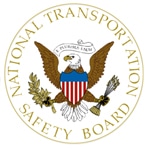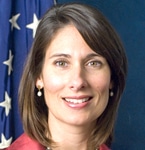The SMART Transportation Division Transportation Safety Team (TST) is comprised of 21 members of the SMART TD, each of whom is on call 24 hours a day to assist in determining the facts in rail-related accidents.
The team members are selected by the SMART Transportation Division president based upon their knowledge of operating rules and understanding of general railroad operations, train movements and dispatching. Each member receives extensive training from the National Transportation Safety Board.
When a major rail accident occurs, the TST coordinator immediately assigns one or more TST members, who immediately depart for the scene. The coordinator also notifies the SMART TD general chairpersons in the region and the respective state legislative director, as well the NTSB. TST members assist the NTSB in ascertaining factual data relating to the accident.
Transportation Safety Team members also assist NTSB investigators in locating crew members and others familiar with the territory where the accident occurred, as well as operating rules in force, the motive power, equipment and signal systems in use, and characteristics of track and rail operation.
When a serious rail accident occurs, and the NTSB launches an investigation, the team’s chairperson/coordinator assigns one or more TST members, who immediately depart for the scene. The chairperson/coordinator also notifies SMART TD general chairpersons in the region and the respective state legislative director.
The NTSB is a congressionally created fact-finding body, with no regulatory authority. SMART TD Transportation Safety Team members walk a very narrow line. Their role is to assist NTSB investigators as requested. Two of their toughest responsibilities are never to speculate and always to keep their lips sealed.
From experience, NTSB investigators and safety team members know first-hand that with facts, the devil is in the details. Initial eyewitness reports often are incomplete or even incorrect. Even after the NTSB conducts exhaustive interviews with those involved and those who may have witnessed an accident, facts often are cloudy. Evidence must be collected and laboratory tests conducted.
It can be weeks and even months before the NTSB has enough evidence to reach a determination as to cause. When the NTSB does reach a determination as to the probable cause of an accident, it generally makes recommendations for new safety regulations and laws. In fact, 85 percent of NTSB recommendations result in new federal guidelines, regulations and laws.
The Transportation Safety Team also performs another important service of direct benefit to SMART members. A SMART member involved in an accident can demand that a safety team member or union officer be present during questioning to serve as a witness to what was said.
Transportation Safety Team members can also assist SMART members in ensuring that a SMART TD officer is present should railroad officials seek to question a SMART TD member – and that railroad officials not violate terms of the UTU/SMART TD contract with that carrier.
The Transportation Safety Team should not be confused with the three-person SMART TD Transportation Safety Task Force, which is chaired by Georgia State Legislative Director Matt Campbell. Its role is to craft, in conjunction with the FRA, an action plan to reduce rail-employee risk while on the job.


 The National Transportation Safety Board will hold a two-day public forum next month on the safety of moving crude oil and ethanol by rail, the agency said Thursday.
The National Transportation Safety Board will hold a two-day public forum next month on the safety of moving crude oil and ethanol by rail, the agency said Thursday.